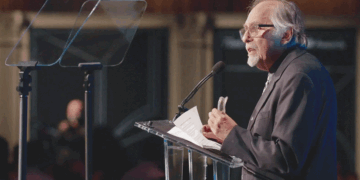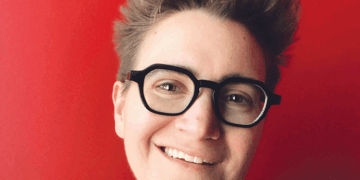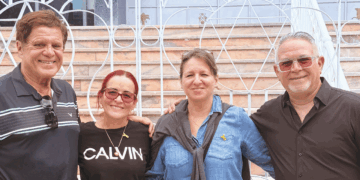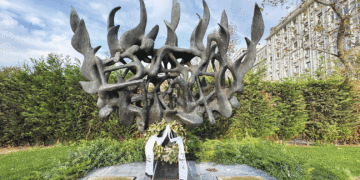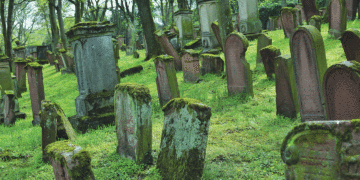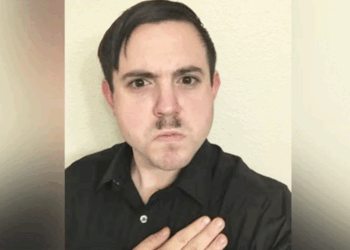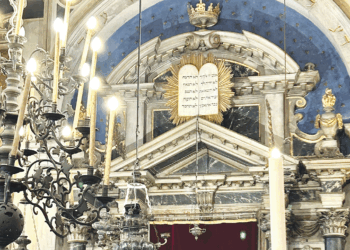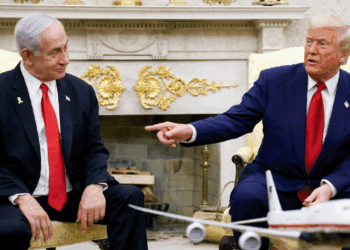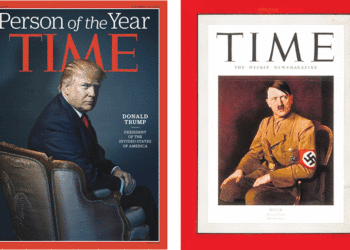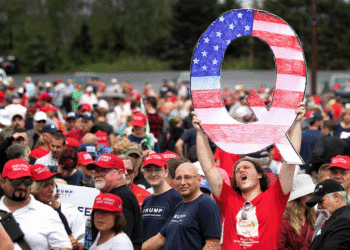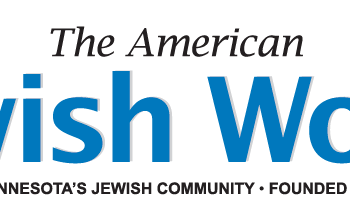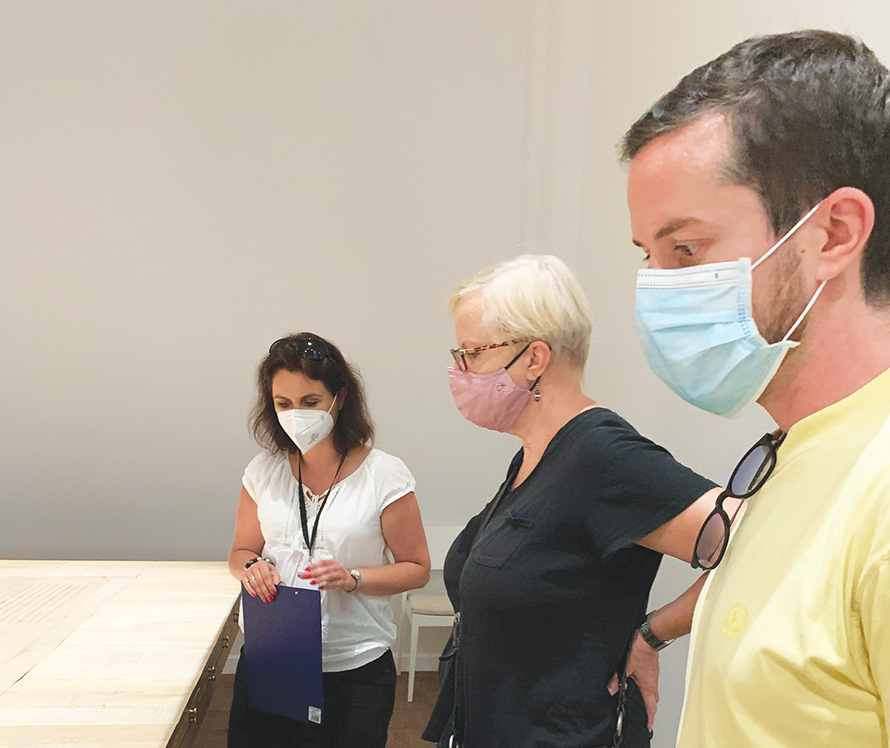
As Jewish World readers likely recall, I, along with my wife Maj-Britt and son Max, traveled to Poland in July. In the paper’s August edition, I wrote about our time in Warsaw, visiting the POLIN Museum of the History of Polish Jews, one of the largest Jewish museums in Europe; attending Friday night services at Synagogue Ec Chaim, a Reform congregation; strolling through the area of the former Warsaw ghetto, along the Vistula River and lovely Łazienki Park; etc.
In the September issue, I recounted our tour of Łódź, which became a textile manufacturing center in the 19th century, under the aegis of cotton mill owner Izrael Poznański, one of the three “Kings of Cotton” in the city. We saw the area of the former Łódź ghetto, the second largest ghetto in Poland during the Nazi occupation; the Shoah memorial at the Radegast train station; and the vast Łódź Jewish Cemetery.
I’ll admit to being fascinated by Poland and its Jewish history. Since returning to Minneapolis, I watched the acclaimed 1985 documentary Shoah, by Claude Lanzmann — all nine hours and 26 minutes. It’s set in Poland. I also watched Aftermath — which was recommended by our Polish tour guides — a 2012 Polish film loosely based on the 1941 Jedwabne pogrom, as it has reverberated in the present day. In the introduction to his book Neighbors: The Destruction of the Jewish Community in Jedwabne, Poland, Jan Gross explains that the “centerpiece of the story” is the day in July 1941, when “half the population of a small East European town murdered the other half — some 1,600 men, women and children.” The murdered half were Jews; and the author has become persona non grata in his Polish homeland for implicating the Polish townsfolk for this heinous act of torture and murder.
I’d like to return to Poland and visit Krakow, Lublin — perhaps, Auschwitz-Birkenau. In the meantime, I’ll relate some of what we learned from a couple of the people involved in the rebirth of the Polish Jewish community, Konstanty “Kostek” Gebert and Helise Lieberman.
On a Monday morning, we were driven to the home of journalist and activist Kostek Gebert. He lives in an apartment filled floor to ceiling with bookshelves in nearly every room. Gebert said that he’s always been a “voracious reader.” Many Polish readers know him as a war correspondent in the former Yugoslavia, and he’s a columnist for Gazeta Wyborcza, the leading Polish daily. He’s written a number of books, including a volume of commentaries on the Torah portions.
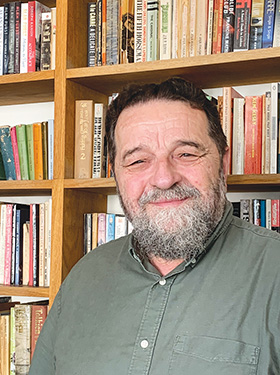
An observant Jew who wears a small yarmulke, Gebert said that the elderly Jews in Warsaw were not interested in the young cohort of Jewish seekers, and vice versa.
“We set up something called the Jewish Flying University,” he recalled. “The ‘flying university’ is a very time-honored, old Polish institution of people meeting in private apartments to study whatever it is the government doesn’t want them to study.” This was in the late 1970s, and Gebert said that he and his fellow Jews “all knew zilch” about things Jewish.
The Jewish Flying University went on hiatus after the 1981 military coup in Poland, then reconvened in 1987. He said that the hard core of the group “had turned either religious or Zionist, or both.” After the disintegration of the Warsaw Bloc, in 1989, Gebert and his friends attended to the task of reshaping the official Jewish community “into something resembling a Jewish community.” Gebert said Polish Jews are not joiners, and put the number of “affiliated Jews” in Poland at 8,000 today. “People will give you different numbers,” he allowed.
“When I started going to shul here, I was the youngest congregant by two generations,” Gebert remarked. “Now we have a more normal, more or less, age structure. We don’t have the numbers.” In the early 1990s, when Polish Jews began “crawling out of the woodwork and testing whether it was safe to be Jewish, the organized community was in no shape to assist them … because we were still sorting ourselves out.” Gebert in those days held hope for a Russian “aliya” to replenish the community; however, the Russian Jews migrating west mainly went to Germany.
The problem in creating a viable Polish Jewish community is not antisemitism, a secondary concern, according to Gebert, who said “the main problem is demography.… The real issue is whether there will be enough of us for a communal life.”
Polish Jewish institutions — schools, JCCs, shuls — have benefited from outside underwriting: funders like the American Jewish Joint Distribution Committee (“The Joint”), the Jewish Agency for Israel and the Lauder and Taube foundations.
“We always needed some kind of material assistance from overseas,” noted Gebert. He added, “Frankly, given the Polish contribution to American Jewish life, it’s really repayment of a debt — it’s not charity.”
And Gebert singled out the Lauder Foundation, which in the 1990s became “the first American Jewish philanthropic body that decided to put its money with living Jews instead of dead Jews.”
Going back some 30 years, there was a debate in Jewish circles over the wisdom of investing in Jewish institutions in places like Poland, a land seen to be steeped in Jew hatred. The Jews should flee to Israel, according to one school of thought. As Gebert put the argument: “Jews should not be living in Poland, and if they do, they deserve whatever they get.”
I really enjoy talking with European intellectuals, Jewish or otherwise, and an hour or so with Gebert was informative and stimulating. I could write hundreds of additional words about his background, such as the fact that his father was a founder of the Communist Party of the USA. According to Wikipedia, Bolesław Konstanty “Bill” Gebert (1895-1986) emigrated to the United States, found work as a miner and became an active union organizer. After World War II, he returned to Poland and took a leading position in the state-controlled labor unions. From 1960 to 1967, Gebert was the Polish People’s Republic ambassador to Turkey. Kostek Gebert is a product of his father’s second marriage.
On our first morning in Warsaw, we met Helise Lieberman, director of the Taube Center for the Renewal of Jewish Life in Poland. We chatted over lunch, prior to our tour of the POLIN museum. She was with us at Kostek Gebert’s apartment and after our visit to the Emanuel Ringelblum Jewish Historical Institute, where the Ringelblum archive, a record of Jewish life in the Warsaw ghetto and the Shoah, is kept.
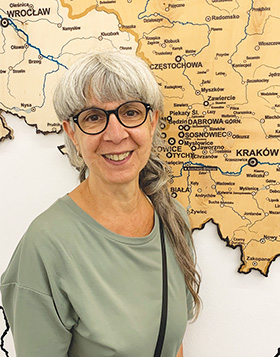
Our longest discussion came during a phone interview in late August. Regarding foreign Jewish funders of Polish Jewish life, I’ll mention that Lieberman, who moved from the U.S. to Warsaw in 1994, was the first director of the Lauder-Morasha School, a Jewish day school in Warsaw. She served as the school’s director for 12 years. Her position at the Taube Center began in 2009, and she also was the first coordinator of the POLIN museum’s education department.
Lieberman mentioned some of the recent history of the Jewish communal resurgence in Poland that Gebert related. She noted that in the late 1980s, a rabbi named Chaskel Besser, a native of Poland, returned to Warsaw and became the primary spiritual leader of the Polish Jewish religious revival. He found Rabbi Michael Schudrich, who is now the chief rabbi of Poland, and, through the auspices of the Ronald S. Lauder Foundation, set him on the course of Jewish renewal in Poland. Besser became the director of the Ronald S. Lauder Foundation for Poland.
Lieberman works for the Taube Foundation, which was established by Ted Taube, a native of Krakow, who arrived in America as a young boy, in 1939, just prior to the outbreak of World War II. Taube is a major contributor to the POLIN museum, the Jewish Historical Institute, other museums and JCCs.
I was struck by the non-Jews we met in Poland that are deeply involved in studying Jewish culture, restoring unkempt Jewish cemeteries and, generally, exploring the meaning of the absence of the three million Polish Jews murdered in the Shoah.
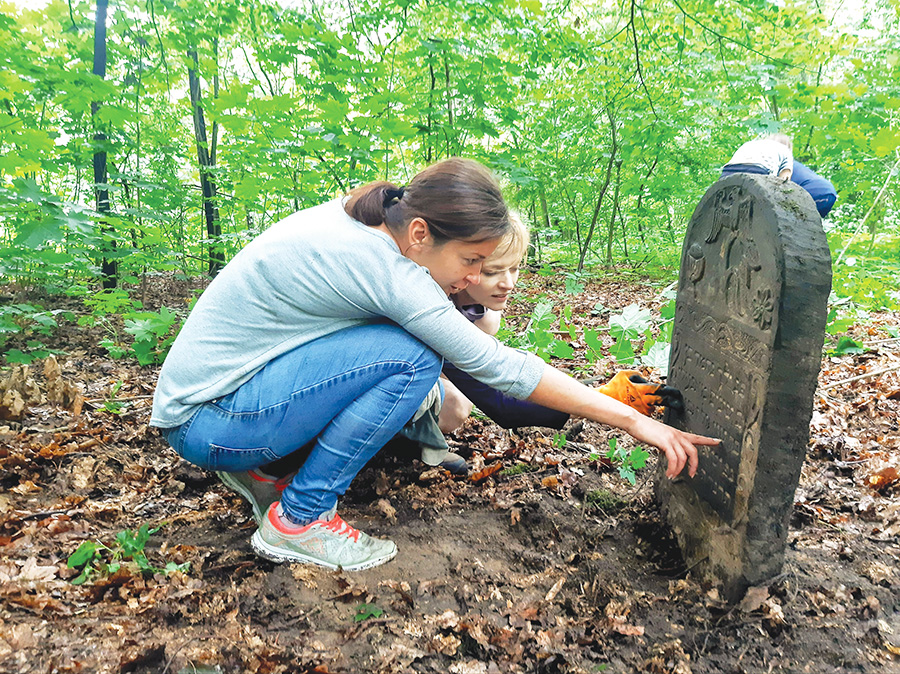
Lieberman commented that her team is made up of Jews and non-Jews. The young non-Jewish Poles immersed in Jewish culture “believe in sharing authentic narratives of Jewish history…. [They] are invested for the sole purpose of making it accessible, returning it to the space where it belongs in Polish life, certainly in history.”
“There are so many non-Jews working on the preservation of material Jewish heritage that you want to kvell,” Lieberman said. “It’s just extraordinary what people in small, small villages do to preserve a cemetery, make sure that their high school class knows that that town had a significant Jewish history.”
Polish educators and curators and directors of various museums “are ensuring that history is shared, heritage is preserved, and expanding knowledge and understanding helps grow today’s contemporary Jewish community.”
— Mordecai Specktor / editor [at] ajwnews [dot] com
(American Jewish World, Oct. 2021)


